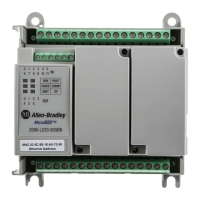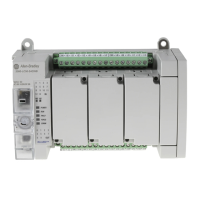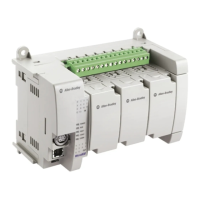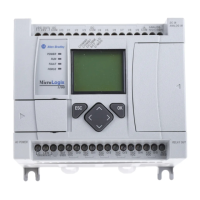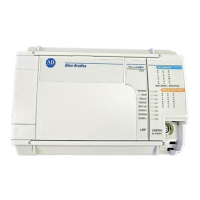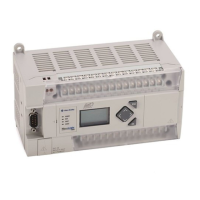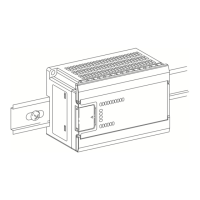Chapter 3 Ladder Diagram (LD) elements
48 Rockwell Automation Publication 2080-RM001D-EN-E - February 2015
Example: Pulse Falling Edge Contact
Recommendation: Restrict the use of output variables with edge contacts
We recommend you do not use outputs or variables with a Pulse rising edge
contact (positive) or a Pulse falling edge contact (negative). These contacts are for
physical inputs in a ladder diagram. If you need to detect the edge of a variable or
an output, we recommend you use the R_TRIG/F_TRIG function block, which
is supported and works in any language at any location in your program.
Recommendation: Restrict the use of output variables with edge contacts
We recommend you do not use outputs or variables with a Pulse rising edge
contact (positive) or a Pulse falling edge contact (negative). These contacts are for
physical inputs in a ladder diagram. If you need to detect the edge of a variable or
an output, we recommend you use the R_TRIG/F_TRIG function block, which
is supported and works in any language at any location in your program.
Return
Returns are outputs that represent a conditional end of an LD diagram.
Tip:
You cannot place connections to the right of a return element.
When the left connection line has the TRUE Boolean state, the diagram ends
without executing the instructions located on the next lines of the diagram.
When the LD diagram is a function, its name is associated with an output coil to
set the return value (returned to the calling diagram).
Example: Return
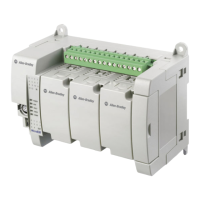
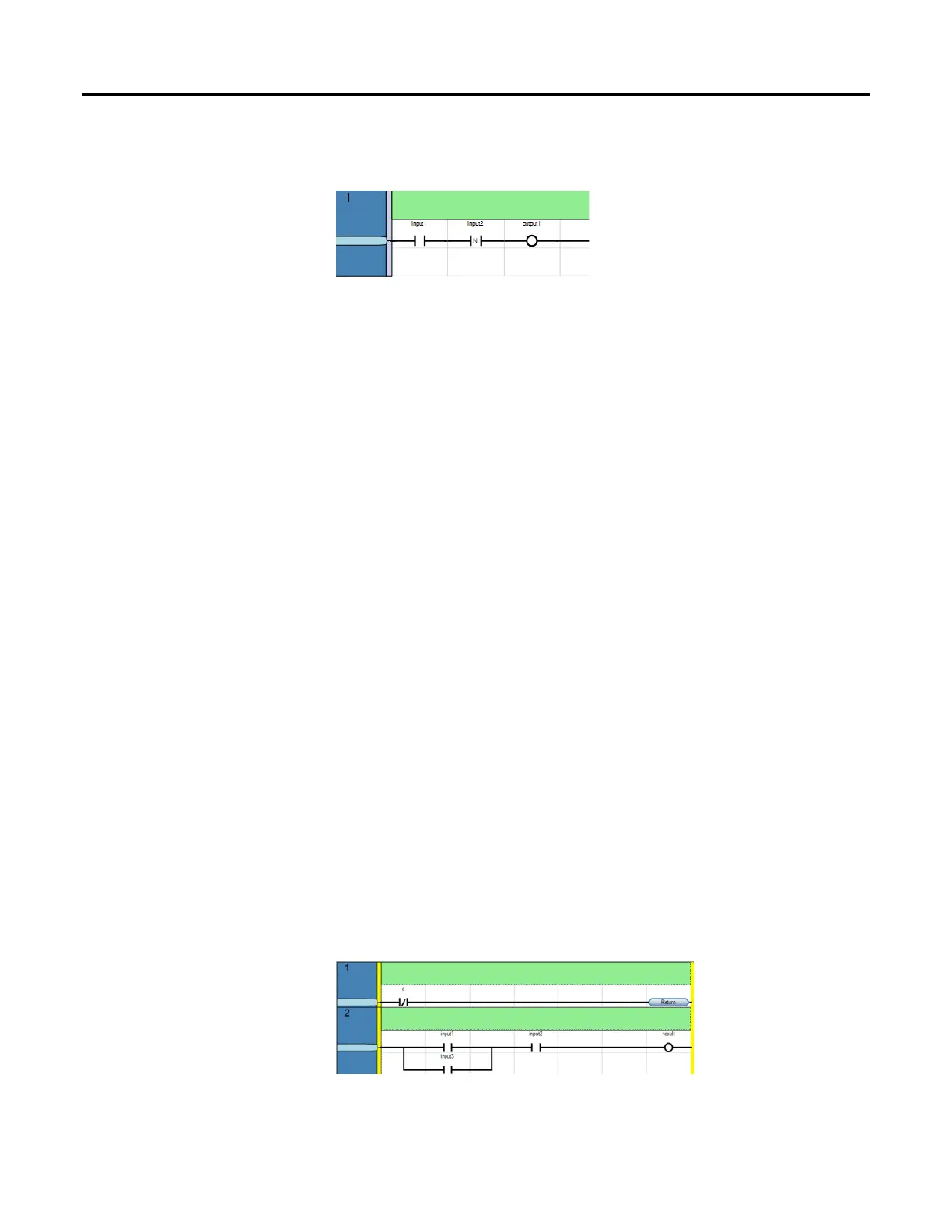